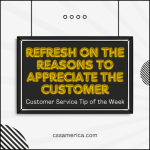When you’re competing with others, it’s easier to know if you’re winning if you’re keeping score. Seem obvious? When you’re playing an individual sport (like golf), it’s easier to know if you’re doing well if you have a goal. Also obvious?
Well here’s something that might not be as obvious. What is your key measure of success in customer service? How do you know (in measureable terms) if you’re winning, if you’re doing well?
In the article California community college students losing ground, the author notes “Statewide, 49.2 percent of the students who enrolled in 2006 to earn a certificate or transfer to a 4-year college did so within six years, compared with 52.3 percent of those who started college in 2002. Completion rates for black and Latino students were below 40 percent.
Bay Area schools reflected the statewide trends, with completion rates sliding at about two-thirds of the colleges.”
Essentially, the State of California has defined “winning” for community colleges as the percentage of “students who enroll and earn a certificate or transfer to a 4-year college within years.” They monitor performance via trends and stratify it by district, ethnicity, etc.
To improve performance, you need a goal. You need a target. You need something measureable, but then you need to understand the true drivers of that measure – the causes to the effect. Remember that metrics like these do not point out what problems exist; they point out the symptoms of problems, but then the community colleges must take the next step to identify root causes.
Customer Service is not a soft science, and Student Success is not an altruistic goal. Student Success has financial impact, economic development impact, documented business and social impact. Make it more tangible by creating the scorecards that measure success as real-time as possible at both the organizational and individual student level.
Define “winning.”





















